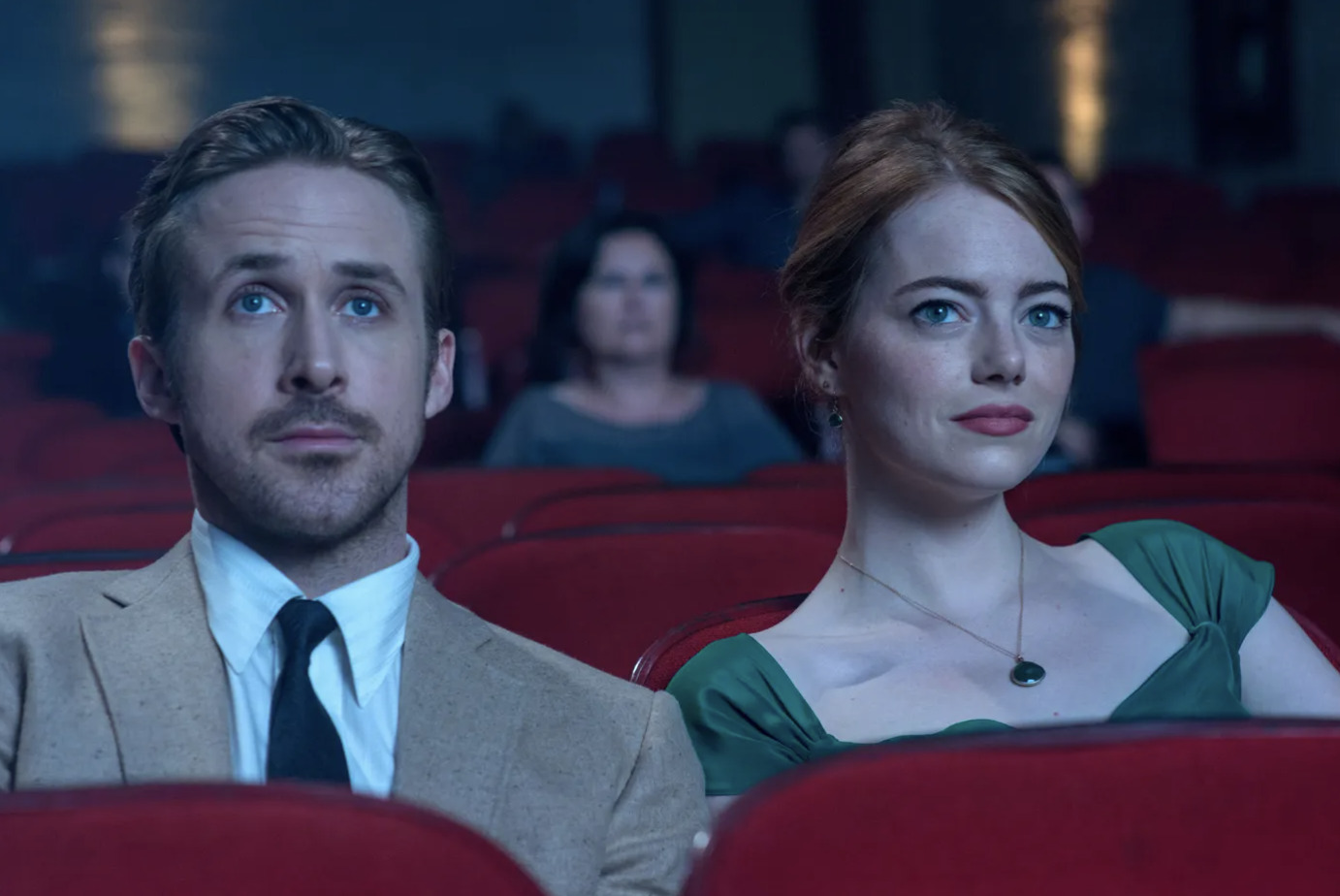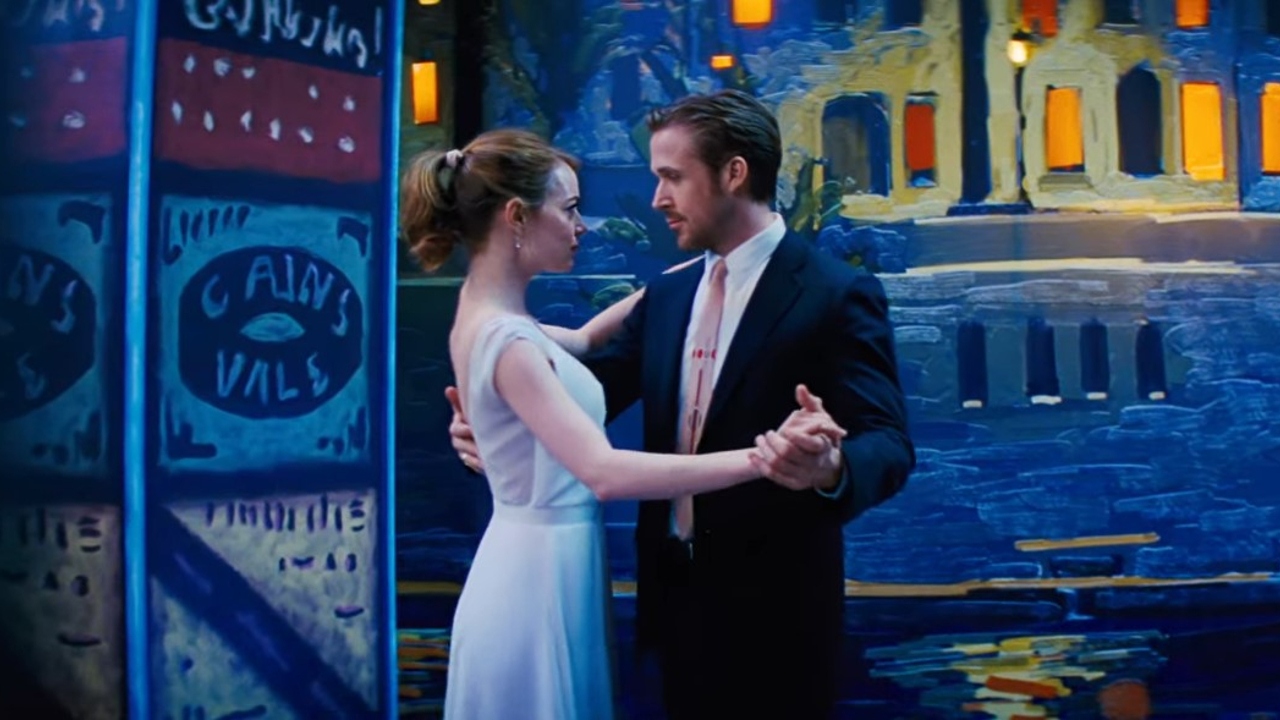La La Land, directed by Damien Chazelle, is widely celebrated as a modern musical that revisits the golden era of Hollywood love stories. The film follows Mia, played by Emma Stone, and Sebastian, played by Ryan Gosling, as they navigate a passionate romance while chasing their dreams in Los Angeles. From the vibrant opening number to their tender duets and dance sequences, the film initially sets up the expectation of a conventional happy ending. However, the conclusion diverges sharply from traditional musicals. Mia and Sebastian do not end up together, challenging audiences to reconsider the nature of love, ambition, and fulfillment.
Chazelle’s ending does not merely subvert musical tropes; it uses them to enhance the emotional impact. While Mia and Sebastian both achieve their individual dreams, with Mia becoming a successful actress and Sebastian opening his jazz club, their relationship ultimately falls apart. The final moments blend reality with fantasy through a dream sequence, providing a bittersweet reflection of what could have been. This approach emphasizes that love and personal ambition can coexist, yet sometimes come at the cost of shared happiness.
The film teases potential reconciliation but ultimately shows that Mia and Sebastian remain apart because they chose to prioritize their dreams. Their breakup is not caused by a lack of love but by the realization that pursuing their passions requires difficult sacrifices. By the time Mia lands her Paris acting role and Sebastian opens his club, they have found fulfillment individually. Their paths, while shaped by each other, diverge in a way that emphasizes that love is not always synonymous with romantic togetherness.

Chazelle Highlights Love’s Lasting Impact Beyond Romantic Relationships and Time Constraints
In interviews, Chazelle has emphasized that the film’s ending was intentional and central to its message. He believes that the most compelling love stories often do not conclude with a happily ever after. According to Chazelle, the significance of love lies in its lasting impact, even if the relationship ends. The film portrays love as transformative and enduring, existing beyond the constraints of time, circumstance, and romantic fulfillment.
A pivotal aspect of La La Land’s ending is its dream sequence, which imagines Mia and Sebastian’s life together had their romance continued. In this alternate reality, Sebastian turns down a lucrative offer to join a band, and Mia’s play becomes a roaring success with Sebastian in attendance. This sequence serves as a poignant reflection of what could have been, highlighting the sacrifices required for both personal and professional dreams. Ultimately, it underscores the impossibility of having everything at once and demonstrates that compromises are integral to life.
In the film’s final real-world moments, Sebastian plays the opening notes of their shared theme in his jazz club as Mia watches. Their exchanged smiles and nods, together with the preceding dream sequence, signify that their love persists even though the romantic relationship has ended. This intimate acknowledgment honors the impact they had on each other’s lives while affirming that love can remain meaningful without being possessive or physically present. The gestures offer closure and blend sorrow with gratitude.

Sebastian’s Jazz Club Shows the Lasting Influence of Mia on His Life
One subtle yet significant detail is the naming of Sebastian’s jazz club, which Mia helped design. This illustrates how their lives are intertwined. Although separated, they have left lasting imprints on each other’s successes. The club serves as a symbolic monument to their shared dreams and mutual support. Such details reinforce the film’s message that relationships can be transformative and influential even when they do not endure in conventional ways.
Chazelle drew inspiration from several classic films in shaping La La Land’s ending, including Jacques Demy’s The Umbrellas of Cherbourg and the silent movie 7th Heaven. Both films are characterized by bittersweet conclusions and ambiguous dreamlike sequences, emphasizing emotional resonance over neat resolutions. By blending stylistic homage with contemporary themes, Chazelle positions La La Land as both a tribute to and an evolution of traditional musicals, updating the genre with modern realism and emotional depth.
Audience reactions to the ending of La La Land have been mixed, though mostly positive. Critics and fans praised the realism and emotional complexity, recognizing that the film delivers a powerful statement about love, ambition, and sacrifice. While some viewers found the ending devastating, many appreciated the nuanced portrayal of fulfillment. Both characters succeed individually and are enriched by their past connection. The ending resonates because it mirrors the unpredictable and imperfect nature of real-life relationships.
The film’s conclusion reflects broader patterns in Chazelle’s work, including Whiplash, First Man, and Babylon, where ambition, sacrifice, and personal achievement are central. La La Land differs in tone by presenting these themes through romance, showing that pursuing dreams often entails personal costs. In this sense, the ending is not tragic but reflective, offering audiences a layered understanding of love, success, and the choices that define human experience. It elevates the film to modern classic status and leaves a lasting impression beyond the screen.



